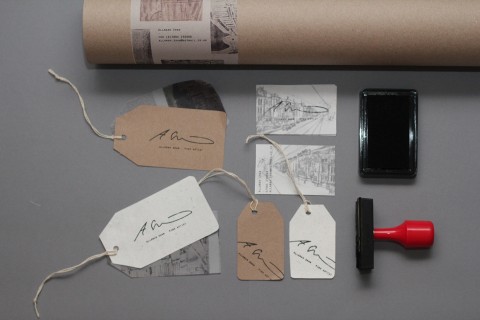If the client asked you which blue would be best for their identity suite, would you say, “Oh, any blue will be fine”? I’m guessing not. You’d reach for that PMS book and items you’ve collected for inspiration and apply your years of training and experience to choose the right color.
And yet, when asked about your niche and target marketing strategies, I’m pretty sure I know what goes through your mind because the mere mention of the words can make my skin crawl, too. It’s probably something along the lines of “I’m too busy to worry about niches and marketing right now.” “That’s on my to-do list.” “If I wanted to be a salesperson, I wouldn’t be a designer.” “I need to focus on being creative.”
Do you REALLY Need to Pick a Niche?
“Yes, absolutely!” says Jen Lombardi, head honcho and creative genius at Kiwi Creative.
Lombardi, who just presented a marketing session at HOW Design Live 2014 about beating the feast-and-famine cycle, has built a quarter-of-a-million-dollar design studio in less than three years.
“If you’re trying to be everything to everybody, you’re going to end up with a total mishmash of clients and projects that probably won’t make you happy … or make you money. You’ll also waste a lot of time chasing down unqualified leads, which will just make you discouraged at the sales process (something designers already despise).”
Preston D. Lee, founder of GraphicDesignBlender.com, agrees. “It’s just good marketing sense. Any freelancer, entrepreneur, or marketer worth anything knows that, in the words of wise Aesop, ‘If you try to please all, you please none.’ I even recommend to my readers that finding a ‘super-niche’ is critical. Niche down even further than you think you have to, and you’ll find all sorts of quality opportunities.”
Those quality opportunities are the best reason for identifying your niche. You don’t have to sell out, limit your creative potential or set yourself up for a life of work you hate. In fact, having a niche will free you up to do more of what you love (and make money doing it) instead of wasting precious hours writing up proposals and setting up meetings that go nowhere.
“More often than not, a designer doesn’t niche down enough,” says Lee. “It’s rare that a designer can be amazing at Web design, print design, logo design and illustration. It happens sometimes, but it’s rare. Most designers think they can do everything, but in reality they’re either only good at one of the 10 things they list on their website or they’re simply mediocre at all of them. The biggest pitfall is not working hard to find a great niche for you and your business.”
How do You Find Your Niche?
If you’re not sure where to start, Lombardi recommends developing a buyer persona. “This is basically a fancy phrase for a description of your ideal client. Demographics are an OK start, but psychographics (personality, attitudes, interests) are much more important.”
You can do this by setting up an informal checklist to gauge what type of client is a good fit (or not) for you. Think about your favorite clients and identify why you like working with them and how you’ve helped them in the past. “This buyer persona will help you figure out who you want to work with and, in turn, why that type of person should value working with you, too.”
Lee suggests you give yourself the time to experiment. “Try everything. Find out what you’re good at, what you like to do, and what kind of work fits best for your business and your lifestyle. Once you’ve tried it all, you’ll know what you like to do, what you don’t like to do, and what you’re good at doing. You’ll discover what kinds of results you can get in certain niches versus others.”
Scratching your Niche
“Many designers find success in targeting specific industries (health care, manufacturing, publishing),” says Lombardi. “This allows you to become the expert in a single field and better market to those clients’ industry-specific pain points. Other designers prefer to target specific types of projects (annual reports, editorial illustrations, trade show displays). When you can become the go-to artist for a particular type of job, you’re able to charge premium rates.”
“I prefer to niche first around the kind of work that I like to do,” says Lee. “If you’re going to specialize in something, if you’re going to become known as the person to go to for [fill in your niche], then you better make sure you like to do it. Otherwise, work will be drudgery every day.”
Lombardi admits she’d get too bored working in the same industry or on the same types of projects every day. Her growing firm targets a specific job role – marketing managers – within small- to medium-size businesses primarily in Northeast Ohio where Kiwi Creative is located. “This gives us a very defined buyer persona, which makes finding prospects easy so we don’t waste our time chasing down unqualified leads. It also allows us to stay creative by working on a wide variety of projects in different industries.”
More Than One Way to Fill a Niche
There are as many creative ways of finding your marketing niche as there are creatives. The important thing is to spend the time doing the necessary work to hone in on what will make you successful.
“Designers can have success using any of these methods to identify their marketing niche,” says Lombardi. “The main point in each approach is still the same: narrow down your field of potential clients so you know who you want to work with and, just as importantly, who you don’t want to work with.”
———-














